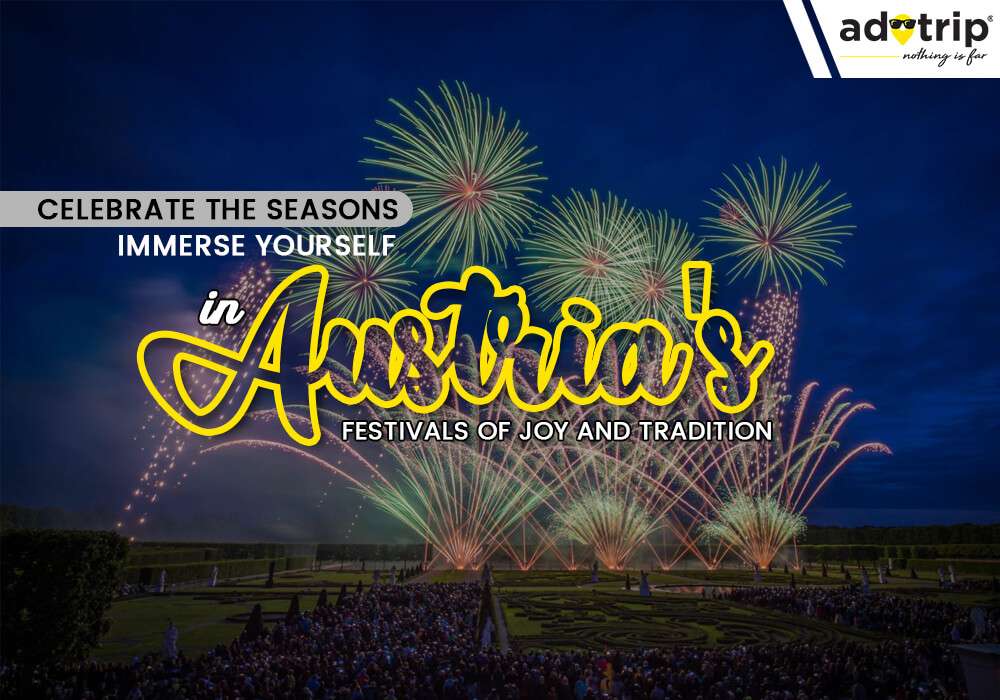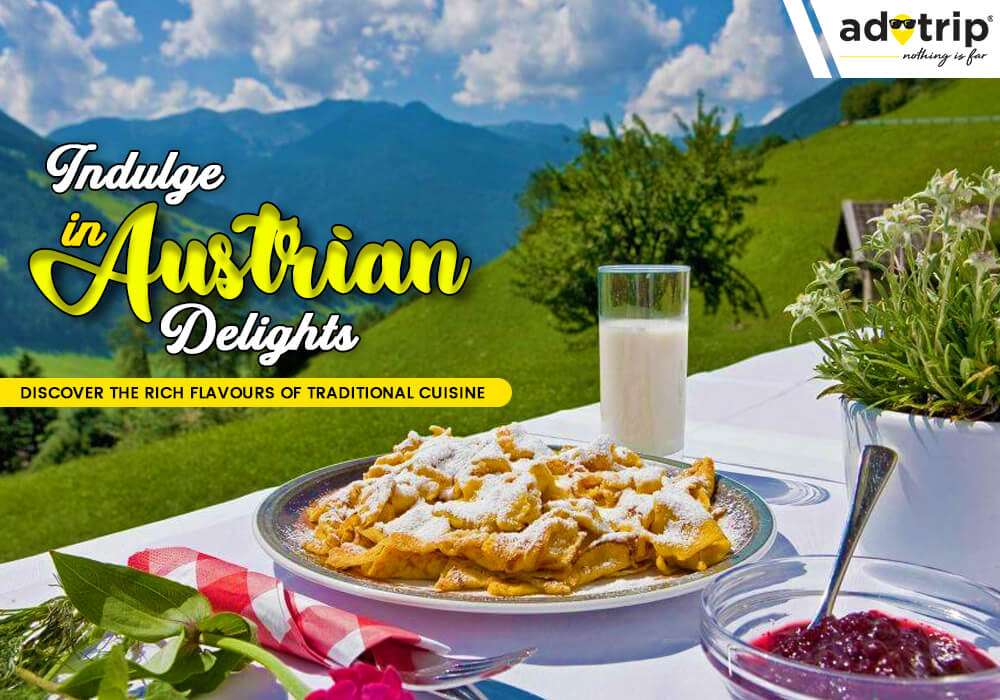
Last Updated At: 14-Dec-2023
Culture of Austria | History, People and Women
Nestled in the heart of Europe, Austria boasts a culture as diverse as its stunning landscapes. From the majestic Alps to the imperial architecture of Vienna, Austria's cultural tapestry is woven with threads of history, artistry, and heritage. Among the many facets that define the Culture of Austria, the nation's traditional crafts and dance forms stand out as vibrant reflections of its identity.
Austrian traditional crafts are a testament to the country's commitment to preserving its heritage. Meticulously crafted woodwork, intricate glassware, and exquisite textiles showcase the skill and dedication passed down through generations. These crafts not only carry historical significance but also serve as a living connection to Austria's past, providing a glimpse into its people's daily lives and traditions.
Culture of Austria | Viennese Waltz to Alpine Echoes
Equally captivating are the Austrian dance forms that grace stages and festivals nationwide. From the elegant waltzes that enraptured Viennese ballrooms to the exuberant folk dances that resonate in Alpine villages, Austrian dance celebrates tradition and innovation. These graceful movements are more than just entertainment; they embody the essence of Austrian culture, encapsulating the nation's spirit, diversity, and the joy of shared celebrations.
- Harmonious Echoes | Exploring Austrian Traditional Music
- Savouring Tradition | A Culinary Journey through Austrian Cuisine
- Festive Flourish | Cultural Festivals that Define Austria
- Crafting Identity | Unveiling Austrian Traditional Crafts
- Elegant Rhythms | Discovering Austrian Dance Forms
- Preserving Legacy | Cultural Heritage of Austria
- Threads of Tradition | Unveiling Traditional Clothing in Austria
- Faith and Diversity | Religions in Austria
- Architectural Elegance | Exploring the Riches of Austrian Architecture
- Literary and Cinematic Charms | Films and Literature of Austria
Read More: Famous Food of Austria
1.Harmonious Echoes | Exploring Austrian Traditional Music
Austrian traditional music is a melodic journey that weaves through the country's cultural heritage, reflecting its rich history and diverse influences. From the zither's enchanting sounds to the accordion's lively tunes, Austrian music carries the echoes of generations. One of the most iconic forms is the Viennese waltz, evoking images of elegant ballrooms and graceful dancers. This genre and folk music from the Alpine regions capture the essence of Austria's rural landscapes and communal celebrations.
2. Savouring Tradition | A Culinary Journey through Austrian Cuisine
Austrian cuisine is a symphony of flavours that resonates with tradition and innovation. Austrian dishes pay homage to local ingredients and culinary expertise, from the famous Wiener Schnitzel to the heartwarming apple strudel. The culture of Austria's cuisine is rooted in the concept of "Gemütlichkeit," a sense of comfort and warmth. Traditional coffeehouses, where locals gather to savour pastries and coffee, exemplify this sentiment. Moreover, Austrian cuisine is celebrated globally, with dishes like Sachertorte becoming synonymous with the nation's gastronomic legacy.
3. Festive Flourish | Cultural Festivals that Define Austria
Austria's cultural festivals are vibrant expressions of its identity, uniting people in celebration and preserving ancient customs. The Vienna Philharmonic's New Year's Concert, held in the grandeur of the Musikverein, heralds the arrival of the new year with enchanting strains of classical music. The Salzburg Festival, a world-renowned event, showcases opera, theatre, and music against the city's historic architecture backdrop. The lively carnival season, particularly in places like Graz and Villach, sees colourful processions and masquerades that harken back to mediaeval traditions.
4. Crafting Identity | Unveiling Austrian Traditional Crafts
Austrian traditional crafts are a tangible link to the nation's past, reflecting its artisans' skill, creativity, and dedication. Intricate wood carvings, delicate porcelain, and exquisite textiles are among the crafts that showcase the craftsmanship that has been honed over centuries. The intricate designs on traditional clothing and the meticulous details in handmade products carry stories of Austrian life and history. These crafts provide an economical livelihood and ensure that the legacy of Austria's artisanal heritage is passed down to future generations.
5. Elegant Rhythms | Discovering Austrian Dance Forms
Austrian dance forms celebrate movement, rhythm, and cultural expression. The Viennese waltz, characterised by its graceful whirls, embodies the elegance that emerged from imperial ballrooms. Folk dances like the Ländler and the Schuhplattler capture the joyful spirit of rural communities, often accompanied by traditional music. With their distinctive steps and choreography, these dance forms bring people together during festivities, reflecting Austria's shared sense of identity and unity.
6. Preserving Legacy | Cultural Heritage of Austria
Austria's cultural heritage is a treasure trove of historical, artistic, and architectural wonders. The baroque elegance of Schönbrunn Palace in Vienna, the mediaeval charm of Salzburg's Old Town, and the Hohensalzburg Fortress perched on a hill are just a few examples of the country's architectural richness—museums like the Kunsthistorisches Museum house art collections that span centuries, from classical paintings to contemporary works. Austria's commitment to preserving its heritage is evident in its UNESCO World Heritage Sites, such as the historic centre of Graz and the Wachau cultural landscape.
7. Threads of Tradition | Unveiling Traditional Clothing in Austria
Traditional clothing in Austria reflects the nation's diverse regional cultures and historical influences. The dirndl for women and the lederhosen for men are iconic symbols of Austrian identity. These garments are worn during festive occasions and hold historical significance, reflecting centuries of cultural blending. The intricate details of traditional clothing tell stories of local traditions, social status, and craftsmanship. Austria's commitment to preserving this attire ensures that these threads of tradition remain woven into the fabric of contemporary life.
8. Faith and Diversity | Religions in Austria
Austria's religious landscape is a tapestry woven with diverse threads, reflecting a history of religious coexistence. The predominant religion is Roman Catholicism, with churches and cathedrals across the country serving as symbols of faith and heritage. However, Austria is also home to other religious communities, including Protestantism, Islam, and Judaism. This religious diversity reflects Austria's historical role as a melting pot of cultures and a place where different faiths coexist peacefully.
9. Architectural Elegance | Exploring the Riches of Austrian Architecture
Austria's architectural heritage is a blend of styles and influences that have evolved over centuries. From the grandeur of Vienna's imperial palaces to the Gothic beauty of St. Stephen's Cathedral, Austrian architecture reflects the nation's historical and cultural evolution. The Secession Building in Vienna, designed by Gustav Klimt and other artists, is a testament to Austria's contributions to the Art Nouveau movement. The country's architectural prowess extends to modern designs, with examples like the futuristic Kunsthaus Graz showcasing innovative concepts.
10. Literary and Cinematic Charms | Films and Literature of Austria
Austria's literary and cinematic treasures offer insights into the nation's psyche and imagination. Austrian literature boasts names like Franz Kafka, Arthur Schnitzler, and Stefan Zweig, who have contributed profound works that explore human emotions and societal complexities. In cinema, directors like Michael Haneke and Wolfgang Puck have gained international acclaim for their thought-provoking films. The Vienna International Film Festival, Viennale, is a testament to Austria's influence on cinema and its commitment to artistic expression.
In the heart of Europe, the Culture of Austria stands as a testament to the nation's rich history, artistic achievements, and enduring traditions. From the enchanting melodies of Austrian music that evoke centuries of heritage to the intricate craftsmanship that weaves stories into traditional crafts, Austria's culture is a vibrant tapestry that reflects its people's spirit, creativity, and deep-rooted values. The culinary delights of Austrian cuisine offer a savoury journey through time, while the glorious architecture speaks of the nation's historical opulence and architectural ingenuity. Grand and intimate festivals provide a vibrant pulse to Austrian life, a testament to the people's joyful celebrations of tradition and innovation. So, voyagers, plan your best vacation to Austria with Adotrip and enjoy a hassle-free and smooth journey.
With us, nothing is far!
Read More: Famous Festival of Austria
Book Austria Tour Packages
Frequently Asked Questions about the Culture of Austria
Q1. What classical music legacy has Vienna cultivated?
A1. Vienna's classical music legacy includes the following:
- Mozart and Beethoven: Renowned composers who lived and worked in Vienna.
- Viennese Classical Style: Birthplace of the symphony and sonata forms.
- Vienna Philharmonic Orchestra: Prestigious ensemble performing globally.
- Historic Concert Halls: Musikverein and Vienna State Opera, iconic venues.
Q2. How popular are Alpine pastimes like skiing?
A2. Alpine pastimes like skiing are very popular:
- Tourism Draw: Austria's picturesque Alps attract skiers worldwide.
- Winter Sports Culture: Skiing, snowboarding, and winter tourism are integral.
- Economic Impact: Boosts local economies, especially in Alpine regions.
- Year-Round Appeal: Mountain activities extend to hiking and outdoor adventures.
Q3. What imperial history has shaped Austrian identity?
A3. Austrian identity is shaped by the following:
- Habsburg Dynasty: Ruled Austria for centuries, shaping culture and architecture.
- Imperial Residences: Palaces like Schönbrunn and Hofburg reflect imperial grandeur.
- Multicultural Empire: Diverse populations under Habsburg rule influenced identity.
- Legacy in Arts: The patronage of arts and music left an enduring cultural impact.
Q4. How influenced is Austrian cuisine by Hungarian and Czech food?
A4. Austrian cuisine is influenced by:
- Hungarian Influence: Goulash and pastries like strudel and Dobos torte.
- Czech Influence: Dumplings and dishes like svíčková (marinated beef).
- Culinary Crossroads: Historical connections shape Austrian flavours.
- Cultural Fusion: A blend of ingredients and techniques enrich Austrian dishes.
Q5. How strong is the Roman Catholic tradition?
A5. Roman Catholic tradition in Austria:
- Dominant Religion: The majority of Austrians identify as Roman Catholic.
- Historical Role: The Church played a significant societal and cultural role.
- Religious Festivals: Christian holidays and traditions are widely observed.
- Architectural Influence: Cathedrals and churches are prominent landmarks.
Q6. How tied to identity are products like schnapps and pastries?
A6. Products like schnapps and pastries are tied to Austrian identity:
- Culinary Traditions: Schnapps and pastries are longstanding Austrian products.
- Regional Identity: Different regions have unique variations of these products.
- Cultural Significance: Serve as symbols of hospitality and celebration.
- Tourism Appeal: Attract visitors seeking authentic Austrian experiences.
Q7. What Germanic folk traditions persist in rural Austria?
A7. Germanic folk traditions in rural Austria:
- Folk Music: Yodelling, Alphorn playing, and traditional instruments.
- Folk Dances: Schuhplattler and other traditional dance forms.
- Festivals: Celebrations like Krampusnacht and Maypole dancing.
- Costumes: Dirndls and lederhosen worn during local events.
Q8. How distinct are Austria's regional identities and dialects?
A8. Austria's regional identities and dialects:
- Strong Regionalism: Different provinces have distinct cultural traits.
- Dialect Diversity: Various dialects are spoken across the country.
- Cultural Variations: Reflect on traditions, cuisine, and way of life.
- Historical Factors: Influence of historical borders and local customs.
Q9. How well preserved is Austria's mediaeval architectural heritage?
A9. Austria's mediaeval architectural heritage:
- Well Preserved: Many castles, fortresses, and historic towns remain.
- Cultural Landmarks: Castle Hohensalzburg, Burg Kreuzenstein, and more.
- Tourist Attractions: Draw visitors interested in history and architecture.
- UNESCO Sites: Historic city centres like Salzburg and Graz are recognised.
Q10. How enduring is coffeehouse culture in Austria?
A10. Coffeehouse culture in Austria:
- Enduring Tradition: Coffeehouses have been integral for centuries.
- Social Gathering: Spaces for conversation, leisure, and relaxation.
- Viennese Coffeehouses: Birthplaces of intellectual discussions.
- Culinary Offerings: Paired with pastries and desserts like Sachertorte.
--- Published By Adotrip
Latest Blogs

Long Weekends In India 2025 - List of Holidays

Kazakhstan Travel Guide 2025: Affordable Luxury, Visa Free E...

Think Ayodhya is Just Temples? Discover Its Hidden Artistic...

Why Azerbaijan is the Best Budget Friendly Alternative to Sw...










.png)

 Dubai
Dubai Malaysia
Malaysia USA
USA





